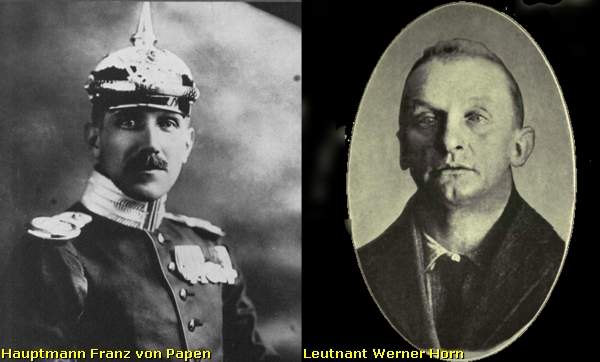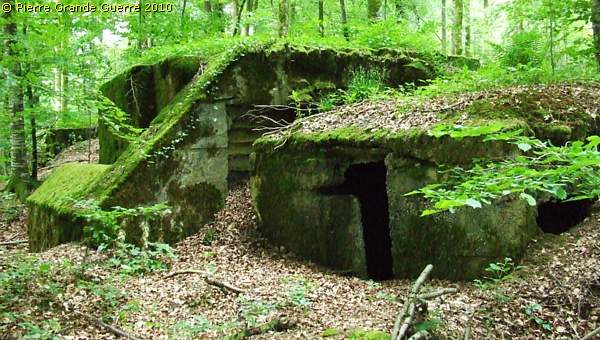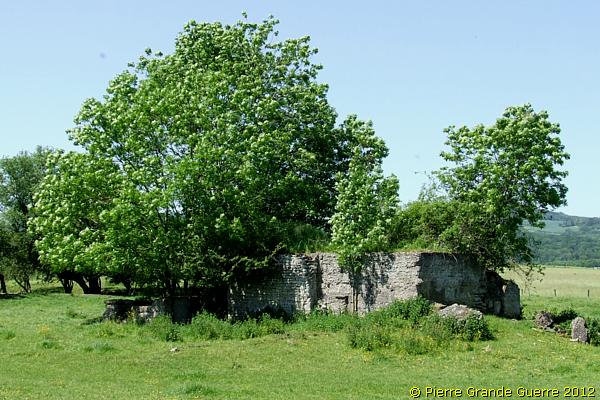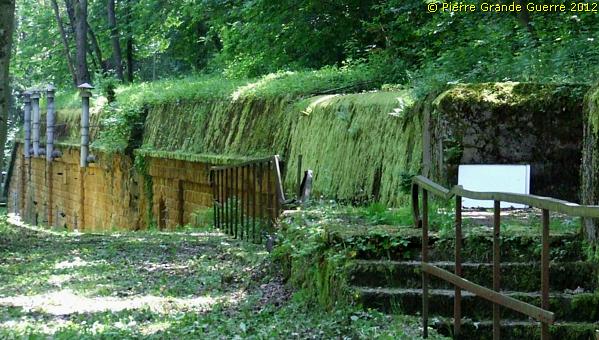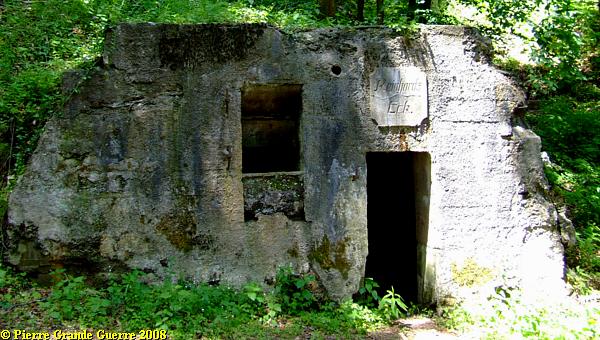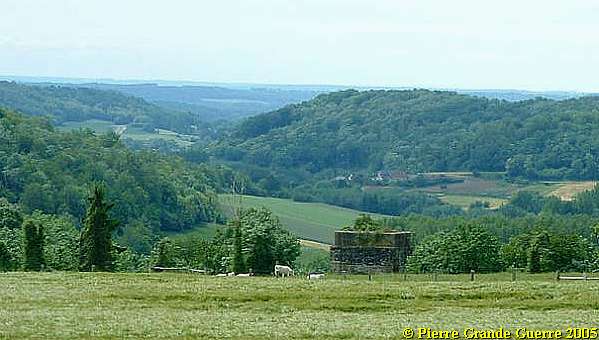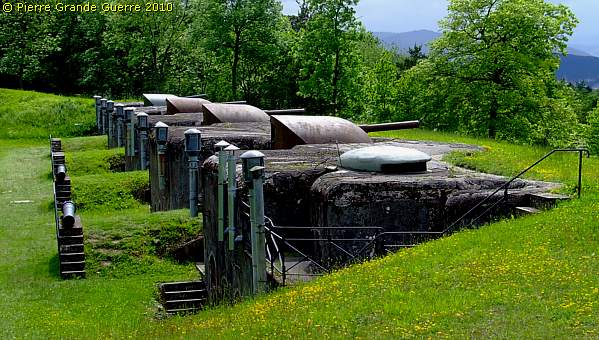SOMME - Mametz Archeological Excavations - Centre for Battlefield Archeology - Devonshire Cemetery
SPECIAL Photo Impression - Year of visit: 26 May 2010
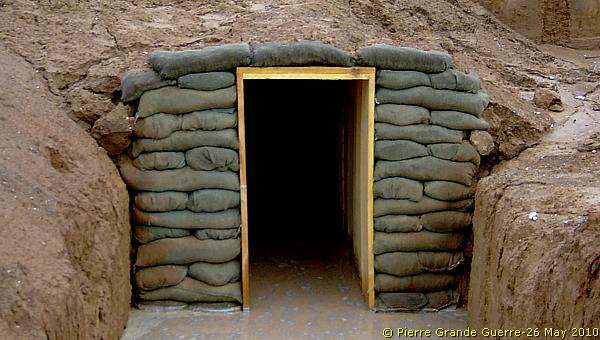
| A special impression, a photo report, of our visit to the Archeological Excavations of a team of the University of Glasgow “somewhere near” Fricourt and Mametz, to end this impression with a visit to the Devonshire Cemetery with it’s impressive backgrounds near Mametz. |
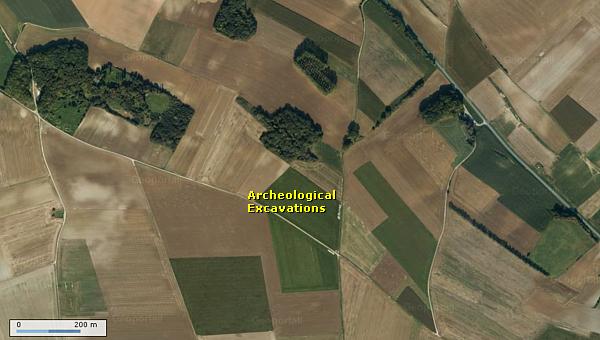
| Introduction and backgrounds of the archeological site Some of my loyal guests already know , that I have an interest in battlefield archeology. I admire these battlefield archeologists , who are having " their heads in their files and their rubber boots in the sucking clay ". Battlefield archeologists , who are digging and brushing carefully , according to painstakingly made plans , in the sometimes still dangerous soil of the battlefield . The Centre for Battlefield Archeology |
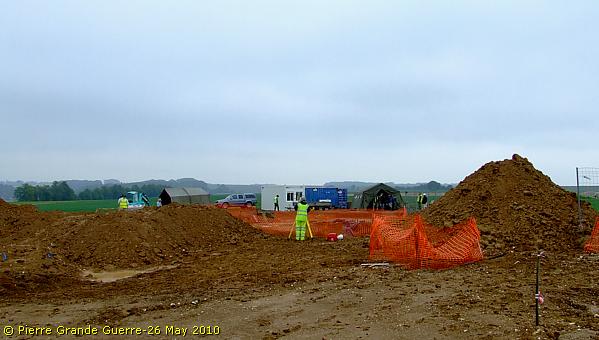
| This year in May I followed with much interest on Facebook.com the reports of the three weeks during project of archeological excavations. A team of archeologists, lead by Tony Pollard and Iain Banks, of the Centre for Battlefield Archeology (CfBA) of the University of Glasgow was excavating British trenches and dug-outs. The team includes amongst other friendly people the Centre's long term friend, the battlefield historian, and the by me much appreciated author, Peter Barton. (*) "Somewhere in the Somme" For very understandable reasons, like to prevent looting of the artefacts, during their work the team of battlefield archeologists, kept their exact location, “somewhere in the Somme”, a secret. After a talk with a well-informed inhabitant of the Somme, we were able to locate the exact whereabouts of these modern “Trench Forensic Detectives”. Our visit to the archeological site On a rainy day in May 2010 we decided to pay the team a visit. At our arrival we were silently, but also very friendly welcomed. Silently, because at the moment of our arrival there was a television team of Channel Four filming a “Time Team Special”, with Tony “Baldrick” Robinson (Blackadder-comedy-series) as the anchor-man. The excavations are over now, the soil is covered again. So I may tell you a little more specific, but not too specific, about the location of the excavations: somewhere near Fricourt. Though being vague out of respect for the wishes of the CfBA, the more experienced Somme battlefield visitors will perhaps as yet recognize the site. Some of the photos in this impression have been made by my always patient assistant, my late wife, Christine (+ 8 May 2018). Pierre (*) For example: “Beneath Flanders Fields”, “The Battlefields of the First World War”, “The Somme”. The Front Sector of Fricourt and Mametz - 1 July 1916 |
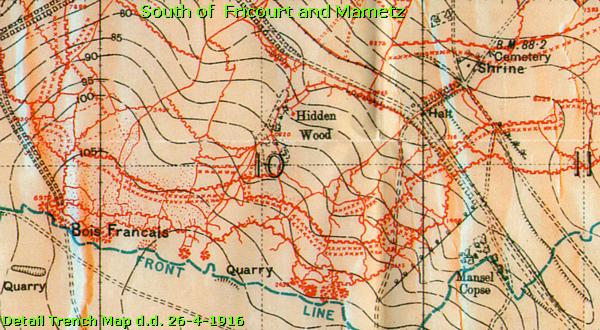
We are in a part of the front sector near Fricourt and Mametz , in 1916 defended by the German 109. Reserve Infanterie Regiment . In this area the British artillery of the 7th Division of XV Corps was successful . The use of mine warfare tactics and the use of "Russian Saps " contributed to the succes. The attackers were able to break into the German positions in the first rush. The 7th Division was rather successful in reaching their targets for 1 July . The 7th Division conquered Mametz village that same day at 1 July . 1st South Staffordshires and two companies of the 21st Manchester Regiment arrived first at the village . By noon 2 July the British captured the village of Fricourt .
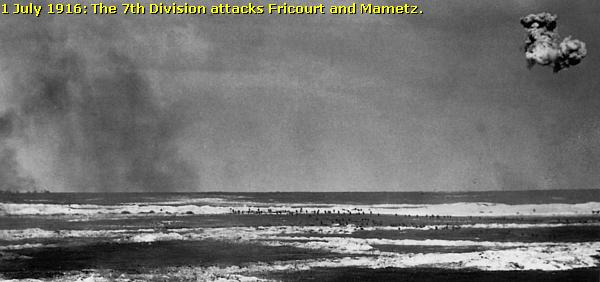
We near the encampment of the archeologists from the south-east.
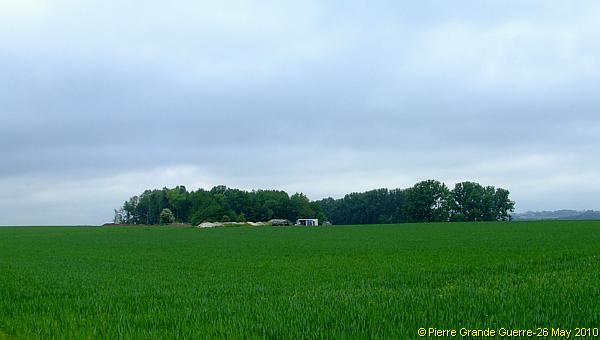
While the television team is filming , ...

... I start silently photographing the site.
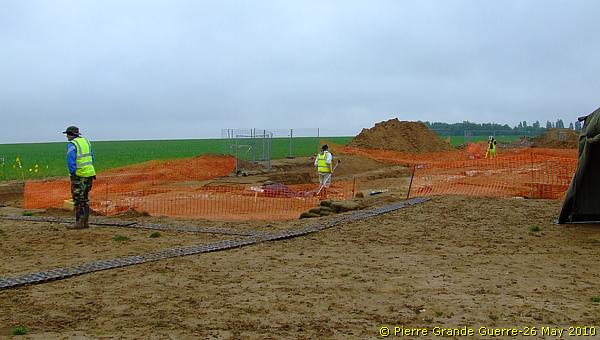
The archeological team is excavating and mapping a ...
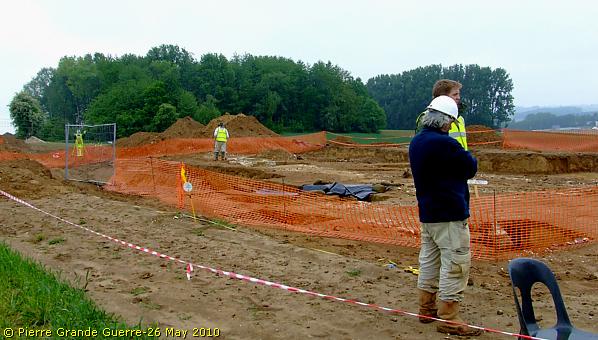
... British front line trench system ...
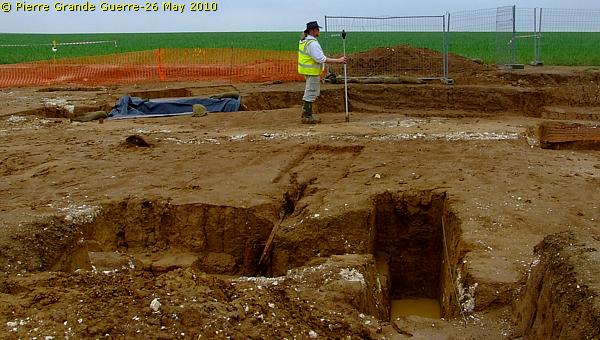
... with it's dug-outs and tunnels.
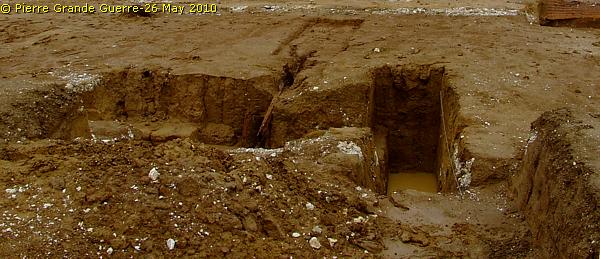
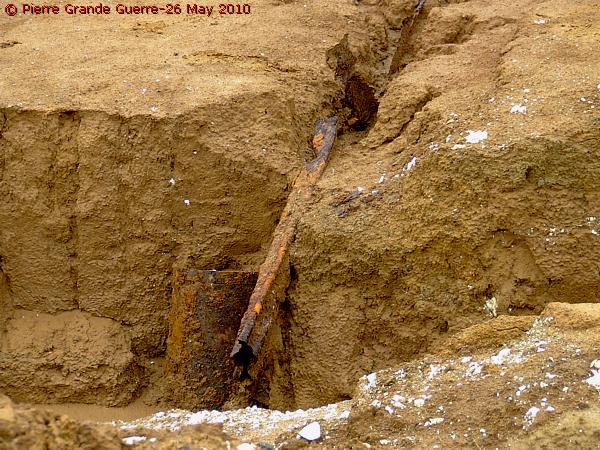
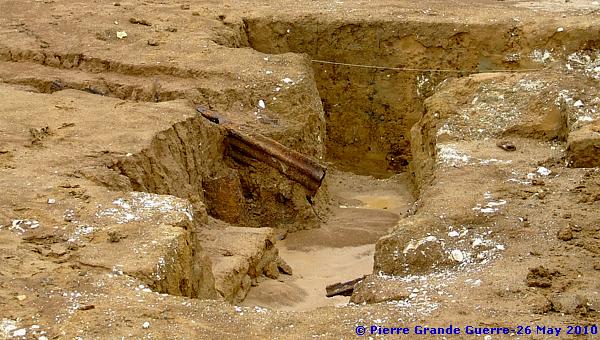
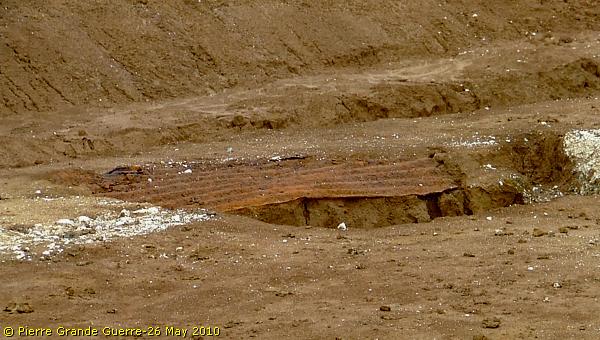
They are digging near the communication trench , ...

... which runs from the south , with the wartime name, "71st. Street".
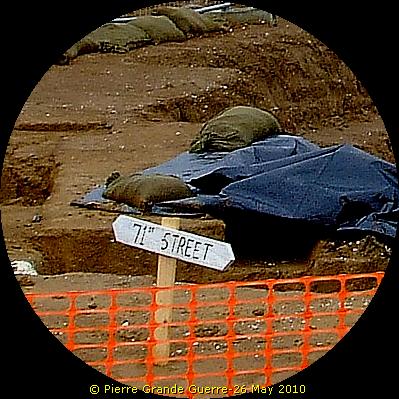
The project involves a team of around 30 persons, ...

... including a detachment from the Royal Engineers, the 36 Training Squadron Royal Engineers.
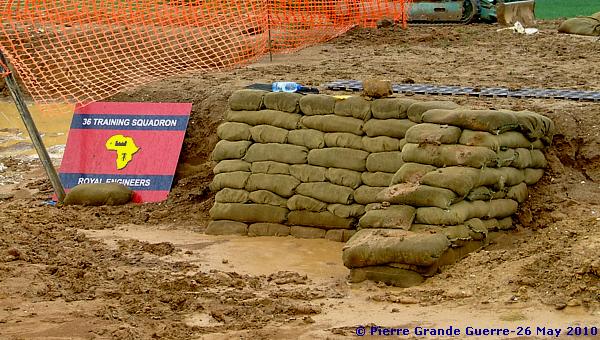
The television team has stopped filming and it is re-viewing the rushes.
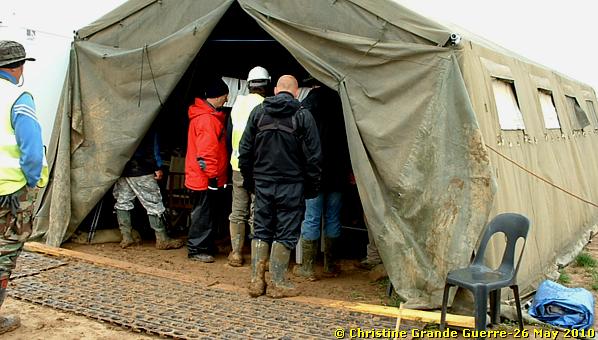
Tony " Baldrick " Robinson seems critically watching the footage.
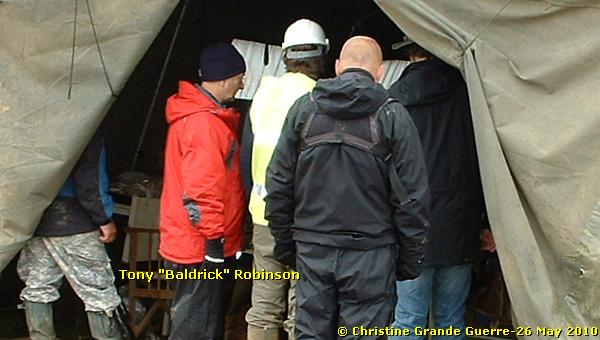
On the archeological site we met the historian and author , the friendly Mr. Peter Barton.
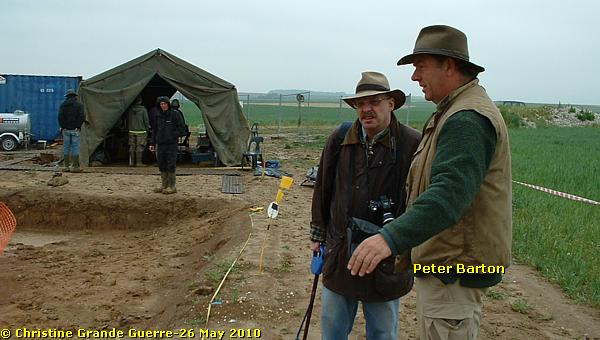
Peter takes all the time to explain the site, and to answer patiently all our curious questions.
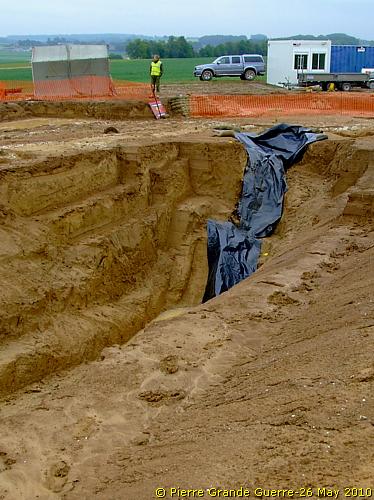
The team searched for dug-outs until a depth of 10 m.

A view of the site made from the west.

The team excavated this dug-out, ...
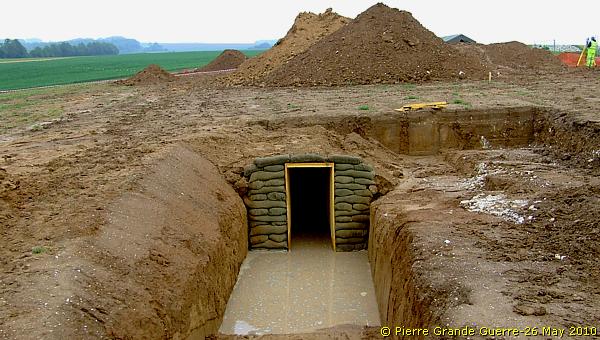
... and partially restored it.

A quote from the CfBA's Facebook:
"The front line trench is revealing duckboards , we have a small underground shelter of posts and sandbags."
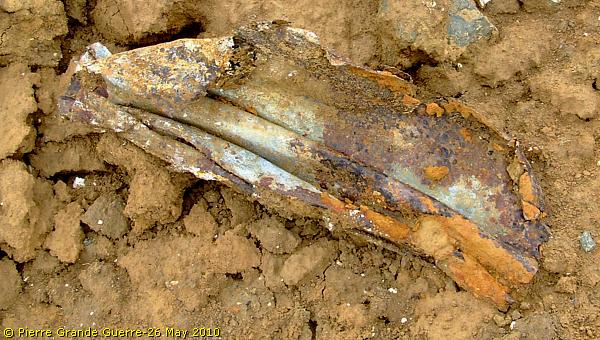
Another quote from the CfBA's Facebook:
" Sandbags are in places incredibly well preserved , including on the parapet on this part of the line."
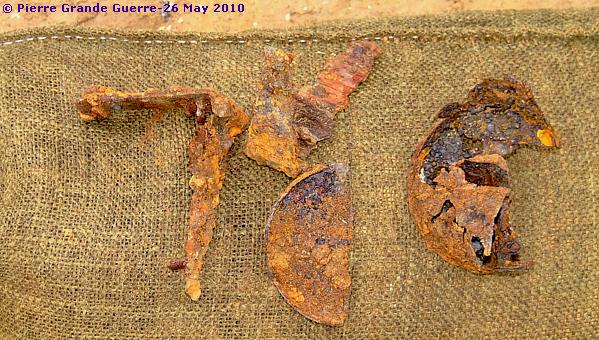
From the CfBA's Facebook:
"We found a wide range of artefacts from weaponry , to more mundane objects such as mess kits. Nothing to worry about, but no room for complacency; these fields can still kill!"
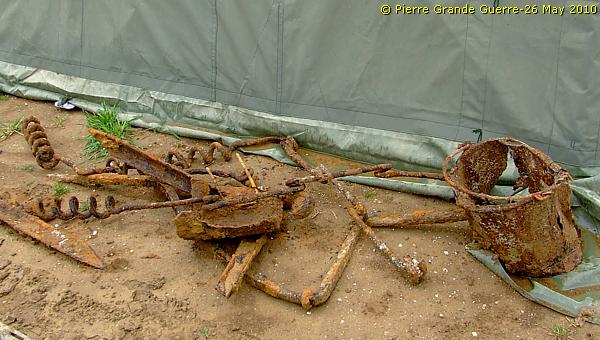
Peter Barton continues to explain us more about the area direct around the excavations site.
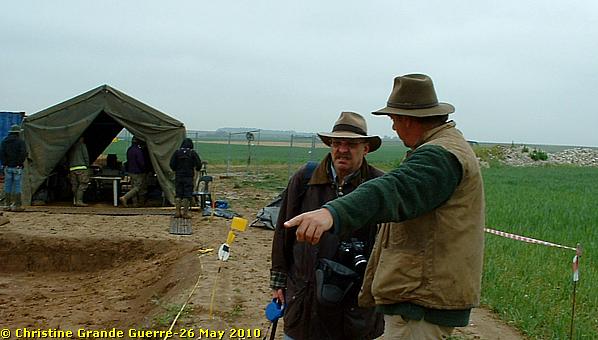
The team marked the location of the trenches with flags. The yellow flags represent the location of British trenches. In this case; communication trench "71st Street", running from the south to the site.
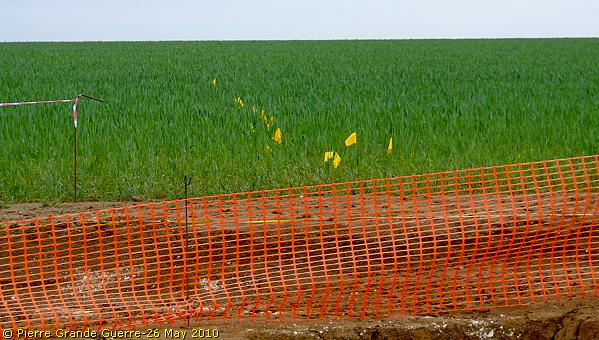
As we will see later, red flags mark the German front line trench.
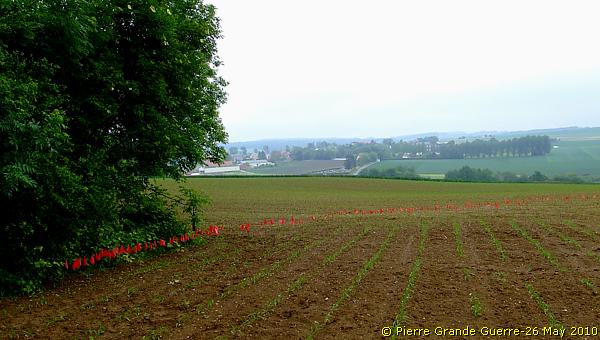
Yellow flags , marking the British front line trench , running from the site further north-east.

The red- white tape marks the position of an underground tunnel.

Some 120 m. away , or perhaps even more, we detect the end of the tunnel.
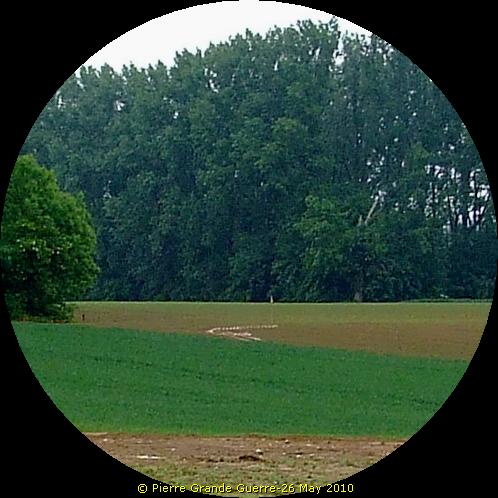
View from the "first British trench " over No Man's Land to the "German trench".
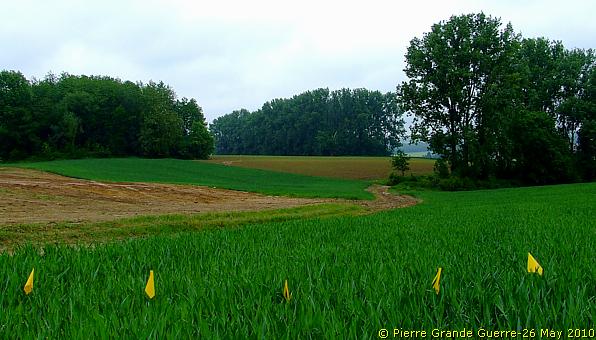
As the red flags are not well visible on the photo above , I re-edited this photo for a better explanation.
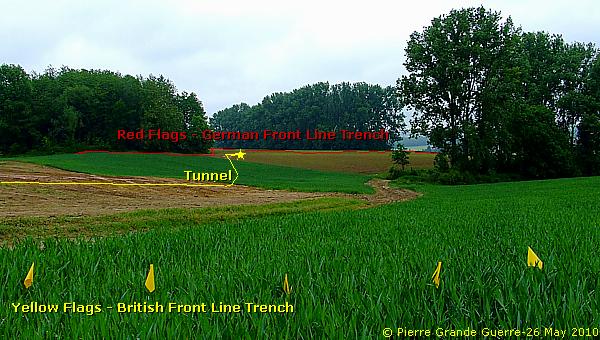
Mine Warfare and Russian Saps
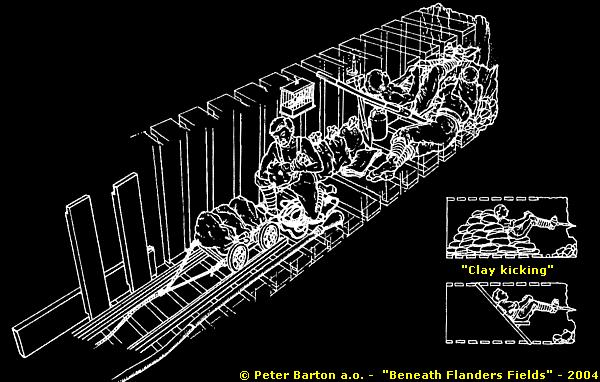
Tunnel warfare or mine warfare was intense in this sector of Fricourt and Mametz . 178 Tunneling Company R.E. laid in this sector, at the end of 10 m. deep tunnels, charges of 30.000, 15.000, and 8.000 Lb.. Two of these larger mines in this front sector of XV Corps failed to explode on 1 July .
Russian Saps
In this specific sector, in the area near the archeological site, four 500 Lb. and one 200 Lb. charge mines were placed at the end of tunnels, called Russian Saps . Just before the attack the charge at the end of the tunnel, the sap head, blowed up, and it opened a crater and access from the tunnel to the open air, covered by the explosion formed crater lips. The purpose of a Russian Sap was on one hand to blow up the enemy’s position, and on the other hand to offer covered access for the attacking troops from the tunnel. Russian Saps allowed rapid contact with the enemy, and sheltered routes for access, and for regress for supports, runners and medics.
Sap Heads could also serve for quickly set-up machine-gun positions , mortar positions , or flame thrower positions .
The multiple explosions in this front sector near Fricourt and Mametz assisted the first wave of attackers to cross No Mans’ Land with minimal losses , because several dug-outs and machine-gun positions had been successfully neutralized .
Sources: Peter Barton: “Beneath Flanders Fields”, “The Battlefields of the First World War”, “The Somme”.
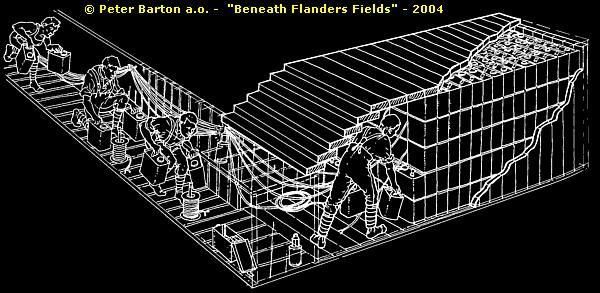
After this intermezzo we return to our location , ...
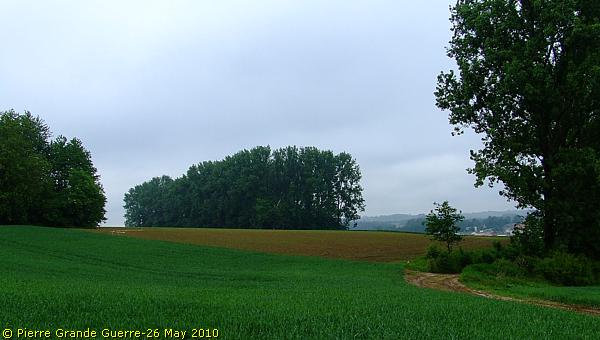
... looking at the German line.

I follow the trace of the tunnel through No Man's Land.
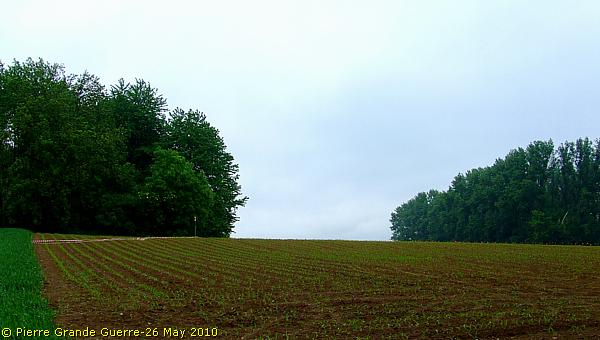
Halfway upward to the Sap Head, a view to the north-east.
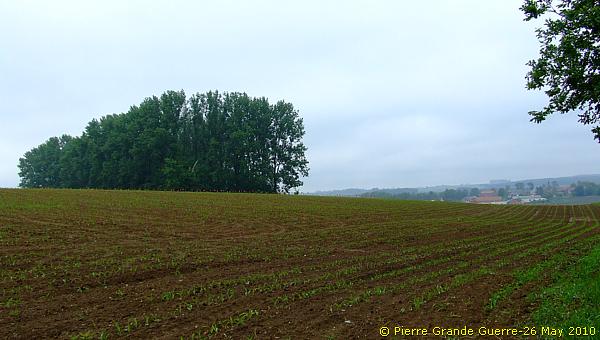
The German trench runs along the edge of the wood.
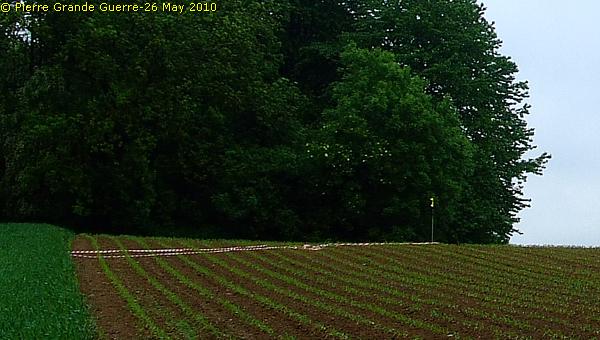
A view southward from No Man's Land to the British line.

The location of the end of the tunnel or Sap Head. Now you might notice also the red flags, marking the German trench.

I edited a panorama, directed north , ...
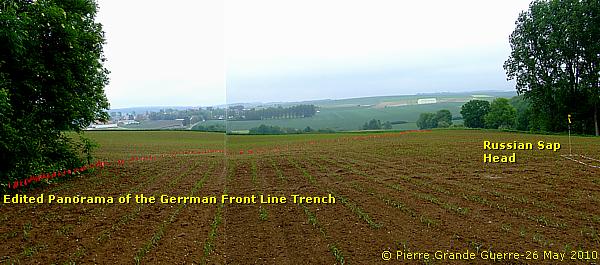
... to give you an impression , ...

... how close to the German trench this Sap Head was. I estimate about 20 Metres.
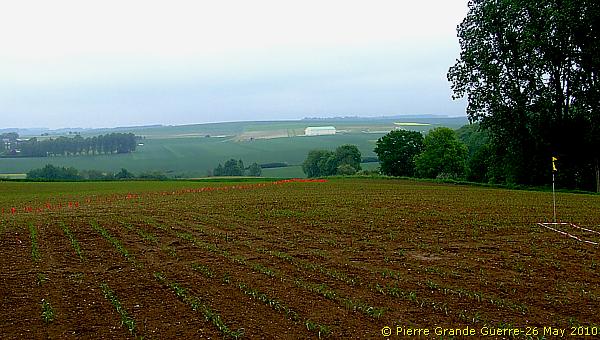
A view from the " German trench " to the British lines.
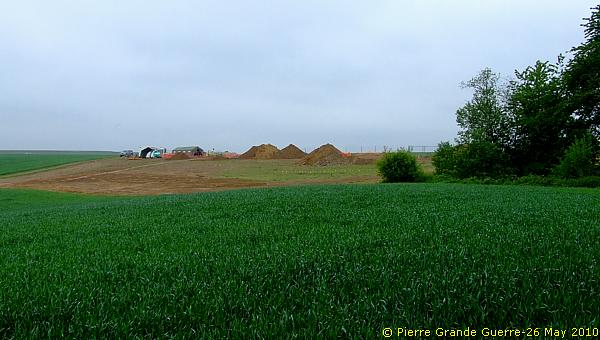
The wood is impenetrable by thicket. But on the edge of it some relics lay around.
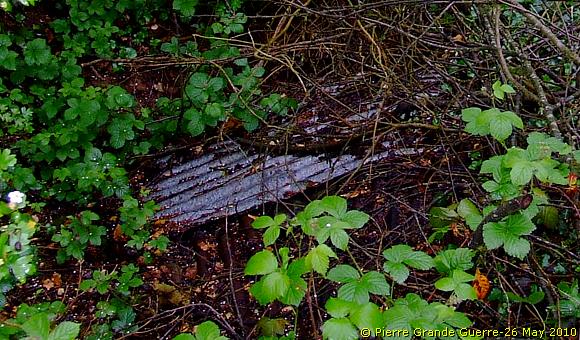
My wife, Christine, and Bobby the Trench Dog are already returning to the archeological site.
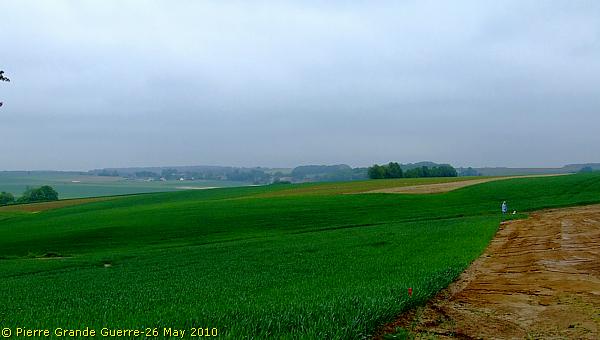
I follow them nearing the British trench again.
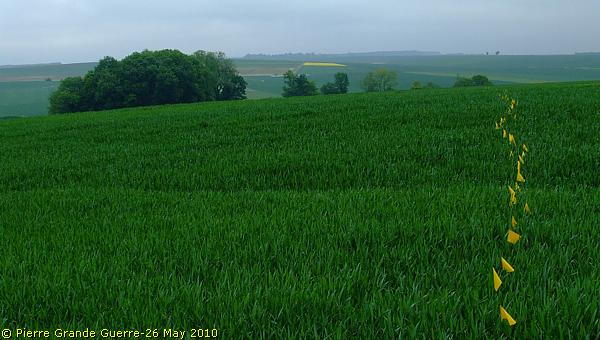
Thanks for an instructive afternoon
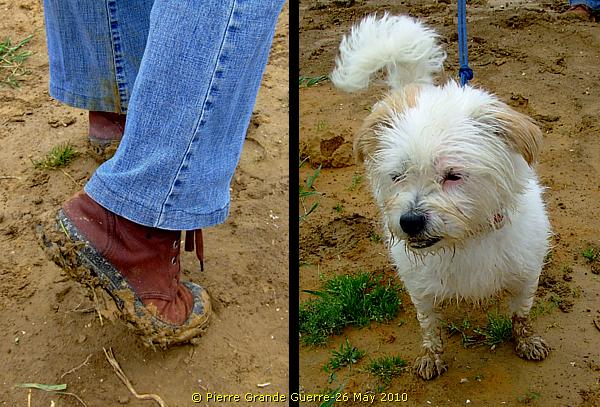
With our boots and Bobby,
covered with the fat, sucking, Somme clay, we express our gratitude to Peter Barton for his
information, to Tony Pollard and his archeological team of the CfBA for
their impressive work. This visit to the
works of this archeological site has increased
our already existing admiration for these diggers enormously! We wish the team good luck and much
success with the research during the next phase of this project; interpreting the collected data. We are impatiently looking forward to the results
and to the release of the “Time
Team special”-documentary.
Thank you very much again , CfBA -Team, for your hospitality , and for an interesting and instructive afternoon !

TIP.
After finishing this photo impression you might be interested in watching the 30 mins. documentary of the Time Team: “ The Somme's Secret Weapon -Mametz”
. A short description: “Tony Robinson and team are at a dig near Mametz in France. They are there to search for the remains of a Livens Large Gallery Flame Projector
– a weapon believed to have been deployed for the first time on 1 July 1916, the first day of the Battle of the Somme.”
As we leave the site, we decide to visit next a nearby location , that reminds us of the horrors, this area knew, and where ...

... the attack of 1 July was at first not that succesful at all , as elsewhere in this front sector: ...
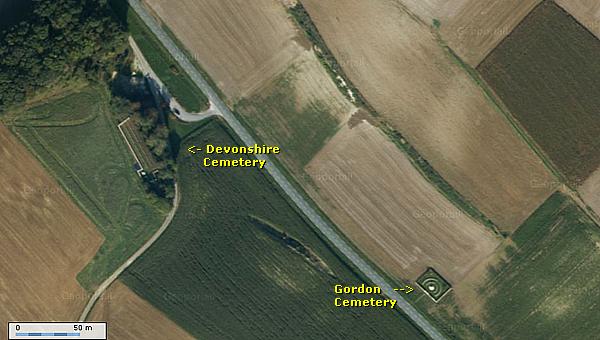
... near Devonshire Cemetery .
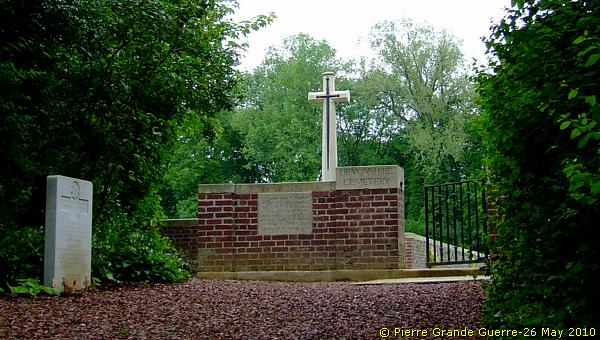
Devonshire Cemetery has a remarkable background.
Captain
Martin's
Warning
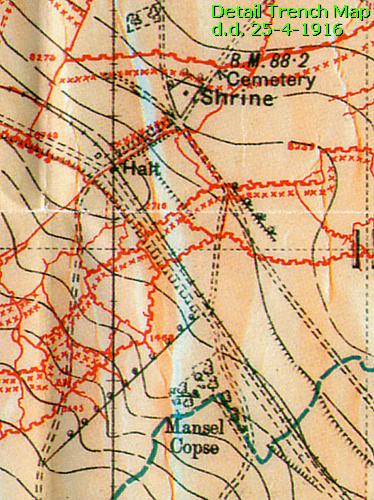
| The 8th and 9th Battalions of the Devonshire Regiment, which were part of the 7th Division , attacked on 1 July 1916 from a point south -west of Mametz village , near a copse called Mansel Copse . Before the attack Captain Duncan Martin had warned his superiors that , unless he was supported by artillery or mortar fire , his Devonshire men were at serious risk of enfilading machine-gun fire from the north , from a German machine-gun nest hidden in a Shrine at Mametz Cemetery . Though no one listened to the Captain’s warnings , he still had to obey his orders. At Zero Hour Capt . Martin lead his men over the top to cross a No Man’s Land of not more than 100 metres wide to the first German trench . Within minutes Capt . Martin and 170 of his Devonshire soldiers died under the enfilading fire of the same machine-gun at the Shrine , which he had warned for before . |

Two fragments of the War Diaries , respectively of the 8th and 9th Battn . Devonshires . The handwriting of the 9th Battalion's journalist is rather difficult to decipher.
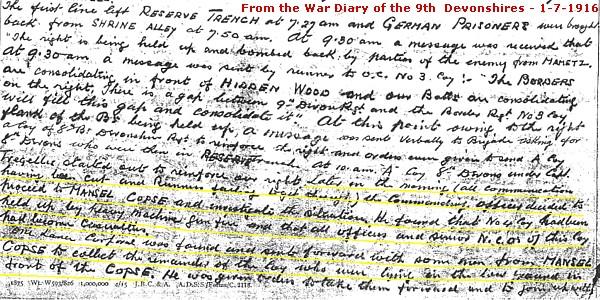
As we approach the cemetery , we pass this remembrance stone at the entrance.
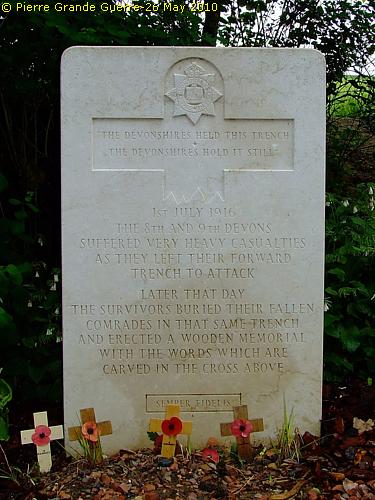
In concise words the inscription tells the history of the cemetery.


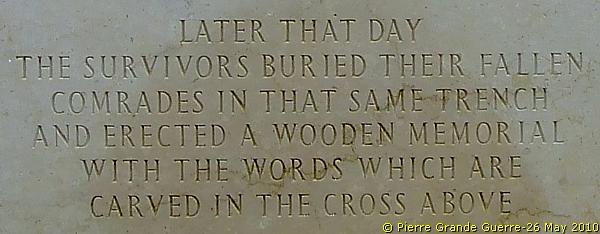
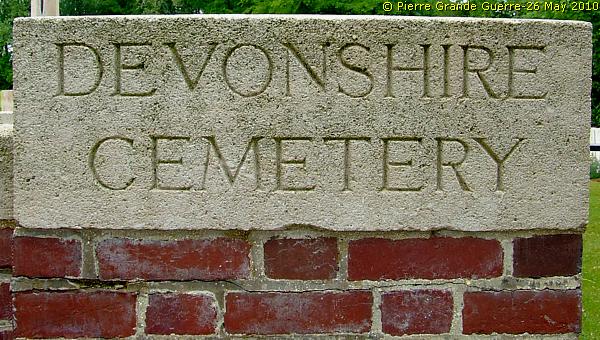
"Mametz was within the German lines until 1 July 1916 when it was captured by the 7th Division, and Mametz Wood, north-east of the village, was cleared on the days following 7 July. The 8th and 9th Battalions of the Devonshire Regiments, which were part of the 7th Division, attacked on 1 July 1916 from a point on the south-west side of Albert-Maricourt road, due south of Mametz village, by a plantation called Mansel Copse. On 4 July they returned this location and established a cemetery, burying their dead in a section of their old front line trench. All but two of the burials belong to these battalions. Devonshire Cemetery contains 163 Commonwealth burials of the First World War, ten of which are unidentified. The cemetery was designed by W H Cowlishaw."
Source:
Commonwealth War Graves Commission
From " their own old front line trench ", a view from the Cross of Sacrifice ...

... over No Man's Land into the direction of the German lines.
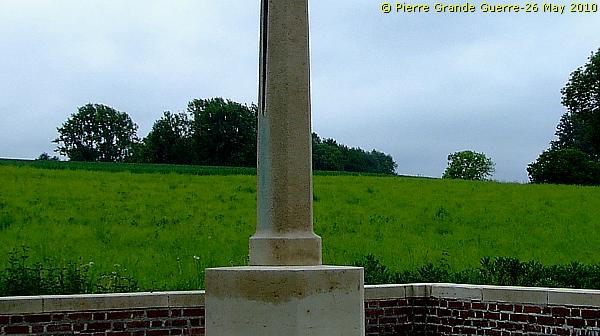
Four of the ten unidentified burials.

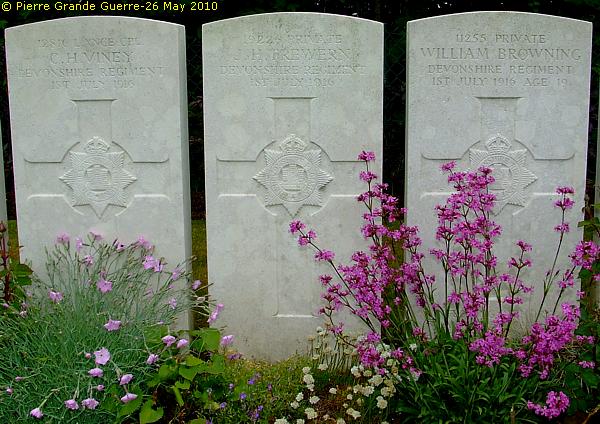
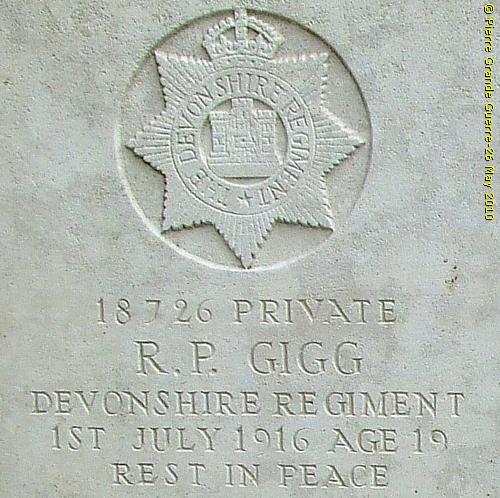
Sometimes Officers share a grave with two Privates.
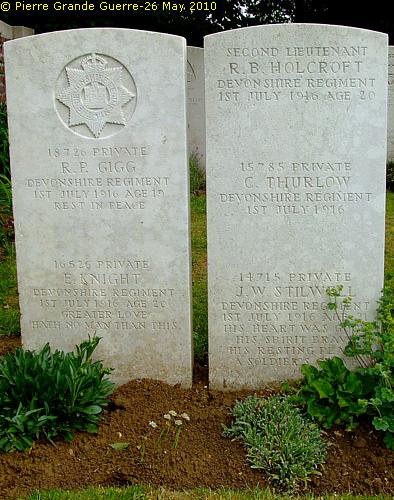
Distracted by the noisy but also very industrious gardeners at the cemetery I forgot to take a picture of the grave of Capt. Duncan Martin. But recently Ronald Schuurmans from the Netherlands sent me these 2014 photos below this frame of the grave of Captain Martin.
Capt. Martin, who also, like other officers on this cemetery, shares his grave and headstone with two privates, resp. F. G. Oxford and M. Williams, both killed at 22 years old. Capt. Martin was only 30 years old, when he was killed. The grave of Captain Martin.

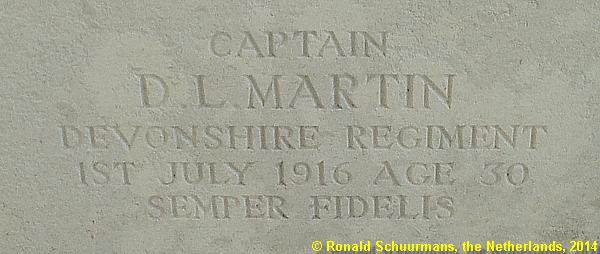

Some interesting engravings , texts chosen by family.


Right: one of the two non- Devonshire burials.

The other of the two non- Devonshire burials.
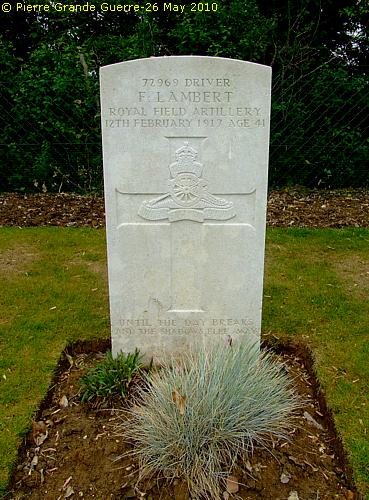
Last view form the Cross of Sacrifice.
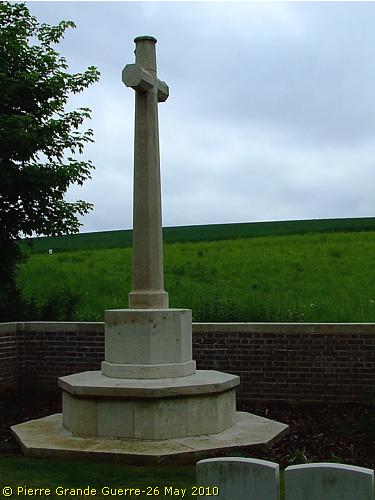
We end this Special Impression of Fricourt and Mametz with a landscape view from just outside Devonshire Cemetery to Gordon Cemetery.
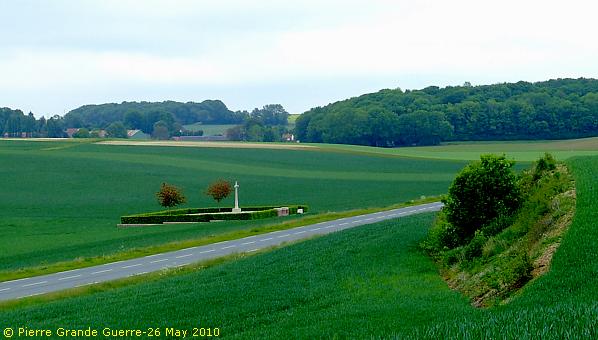
Mametz was within the German lines until 1 July 1916, when it was captured by the 7th Division and Mametz Wood, north-east of the village was taken on the days following 7 July. Gordon Cemetery was made by men of the 2nd Gordon Highlanders who buried some of their dead of 1 July in what had been a support trench, together with two artillerymen who died 8 July and an unknown soldier. The cemetery contains 102 First World War burials, five of them unidentified. As the precise location of most of the graves could not be established, 93 of the headstones are arranged in semi-circles around the central cross. The cemetery was designed by A J S Hutton.
Source:
Commonwealth War Graves Commission
Many of the German adversaries, killed in this front sector, are buried at the “ Fricourt Deutscher Kriegsgräberstatte ”.
More info about Contalmaison and Mametz Wood? Click on Contalmaison and follow for the next page the link below the photo page to Mametz Wood .
